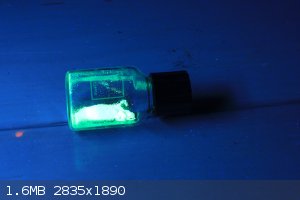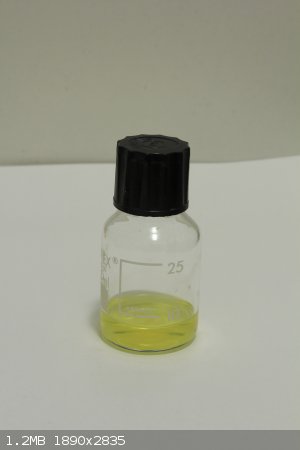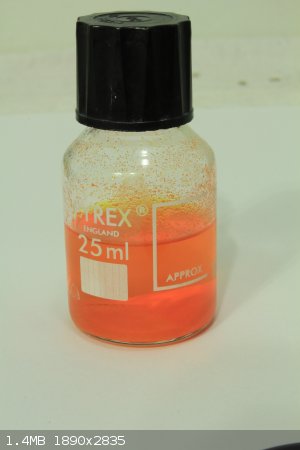Bis(Dibenzoylmethane) Uranyl (IV)
Uranyl cation very easily forms complexes with dibenzoylmethane. This method is very useful for the separation of depleted uranium from other fission
products, or for the extraction of uranium from other rare earths, since they don’t react so readily with dibenzoylmethane
Another way to use this synthesis is the separation of the uranium from its decay products, obtaining( almost) pure U238. This compound will become
more and more radioactive over the years due o the formation of decay products of U238.
WARNING: Uranium salts are very toxic and radioactive, so they must be handled and stored properly.
Also the waste solution that comes must be kept in a sealed lead container.
Precautions must be taken during the preparation to avoid spreading of dusts or contaminated solution, also protective equipment should be worn
Now let's get started!
Required reagents:
-Uranyl Acetate Hydrate
-Dibenzoylmethane
-Methanol

Uranyl acetate under UV light
Procedure:
To a 25ml flask, 0,5g of uranyl acetate hydrate were dissolved in about 5ml of cold methanol.
In another flask, another solution containing 1g of Dibenzoylmethane in 15ml of methanol was prepared.
Once the compounds were fully dissolved, the dibenzoylmethane solution was added to the uranyl acetate solution. Immediately a bright red coloration
appeared.
 
Before and after Dibenzoylmethane addition
The solution was left to react for about one hour and the red crystals that precipitated were recovered on a Buchner and washed with some very cold
methanol.
The final yield was about 0,6g (75%). The yield could be improved working in the presence of a base like sodium acetate or sodium methoxide.

The product consists of very little red crystals. It could be recrystallized, but it is reported to form addition compounds with many solvent.
References:
[1]Handbook of Preparative Inorganic Chemistry by George Brauer p. 1453
[Edited on 6-1-2024 by ItalianChemist]
|